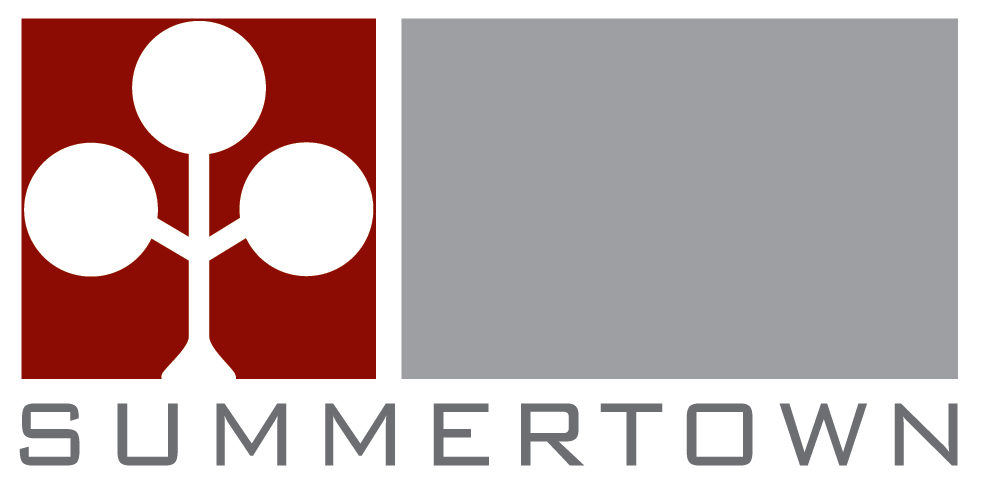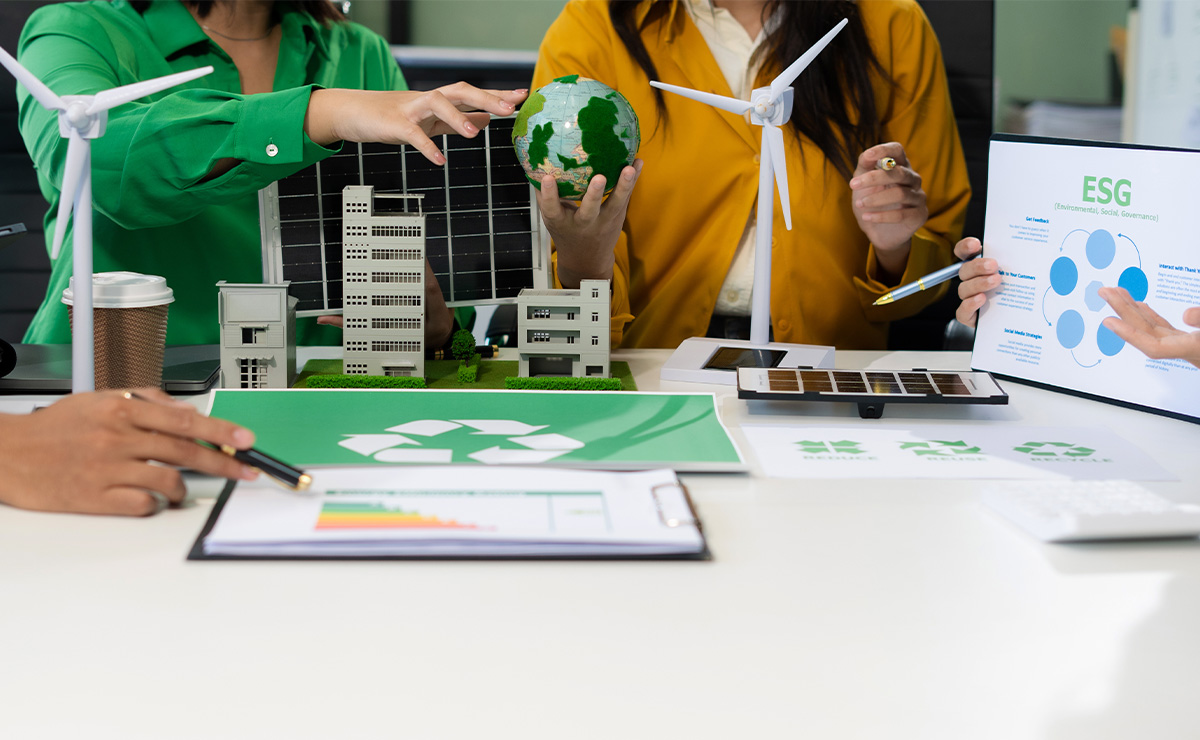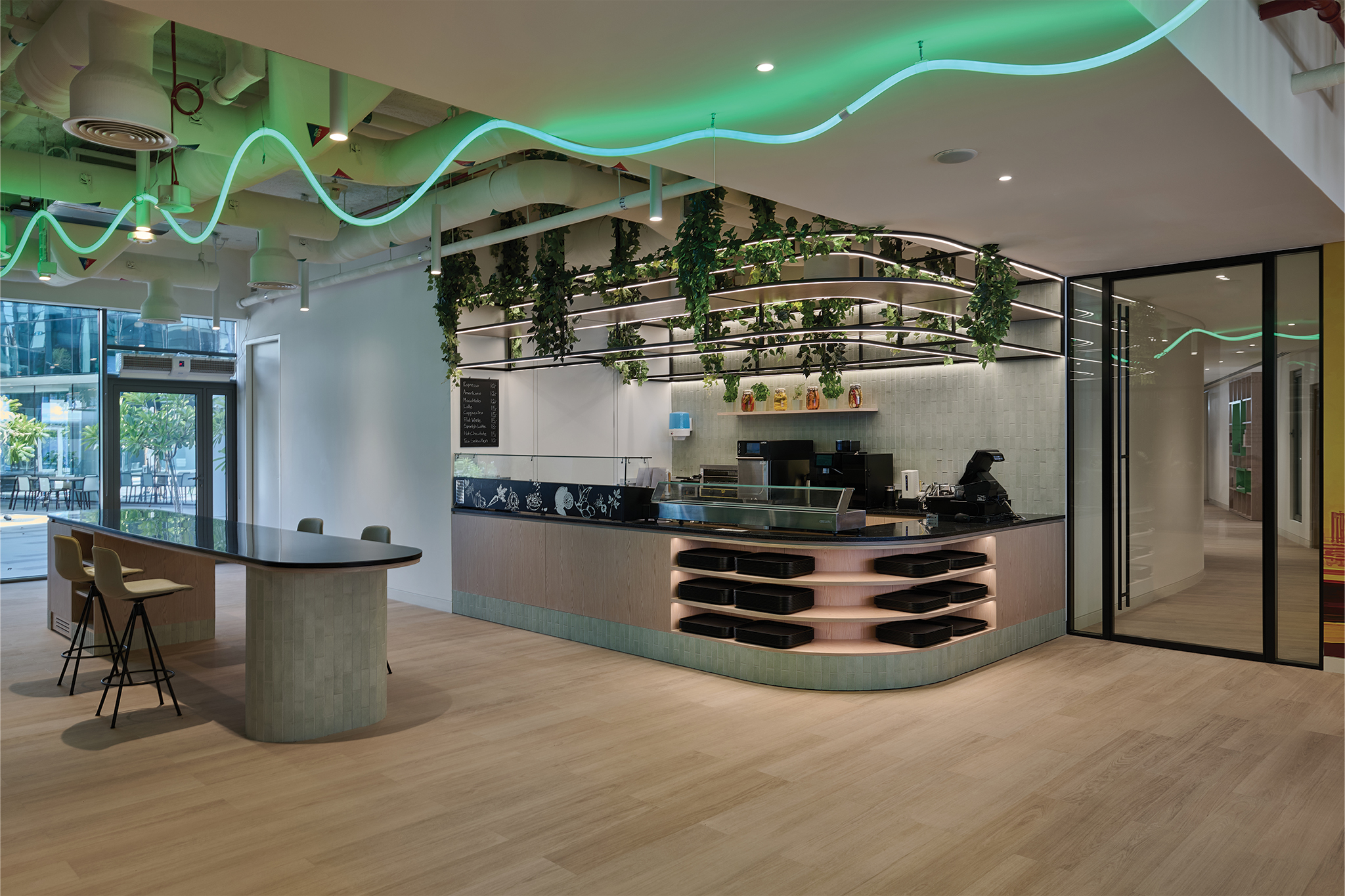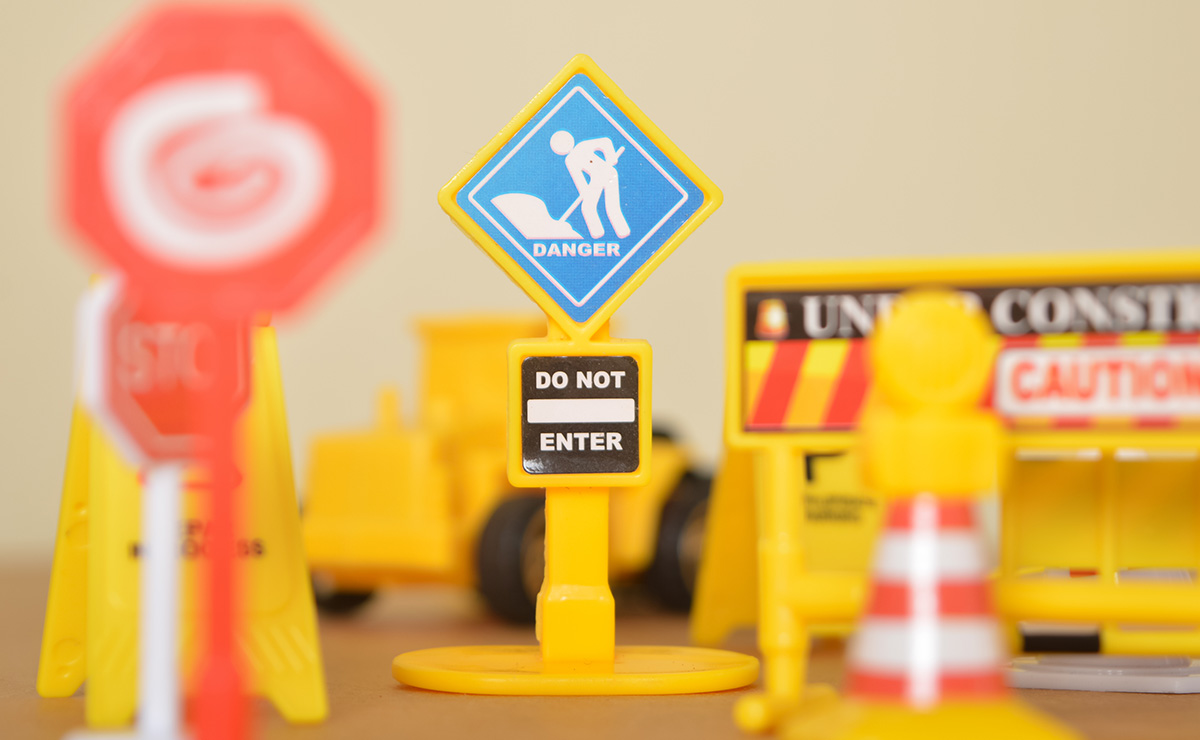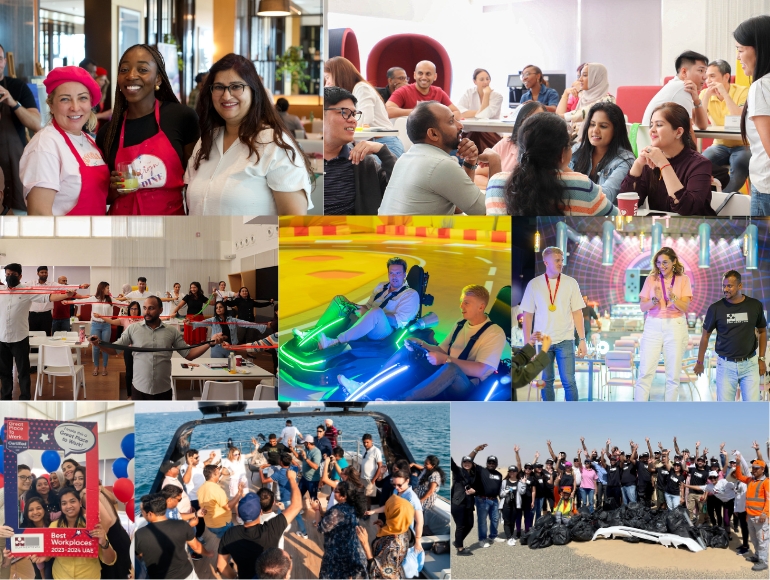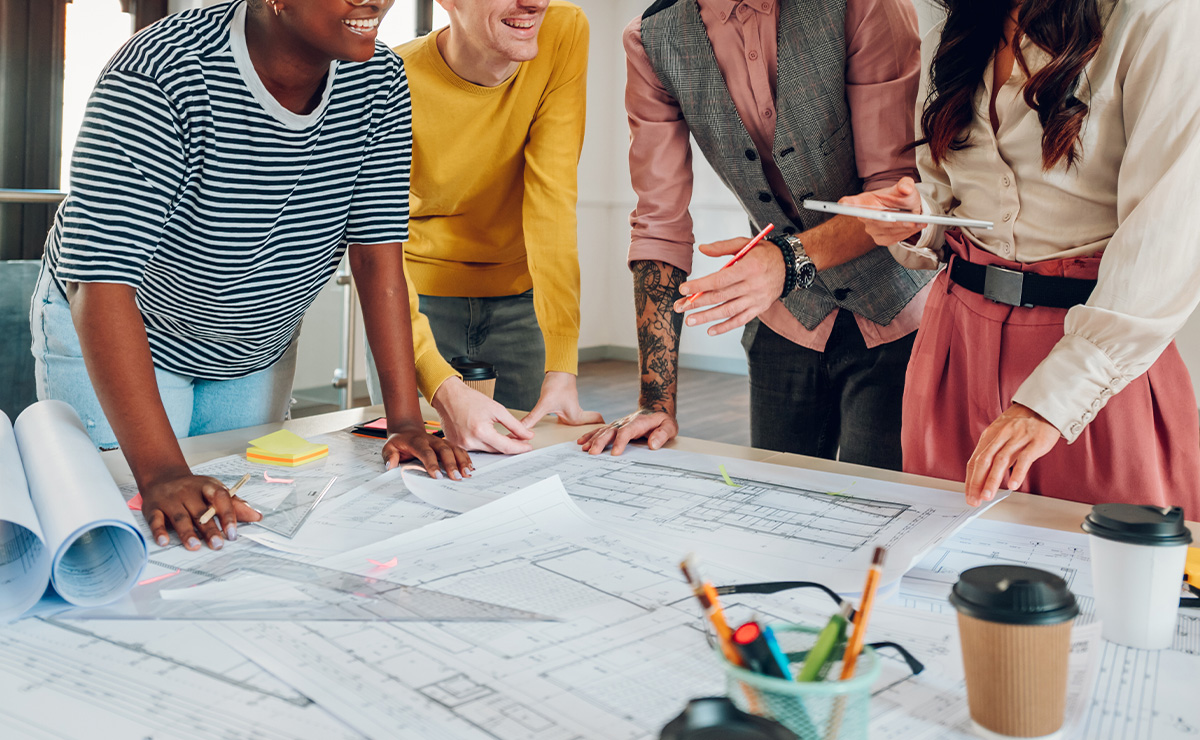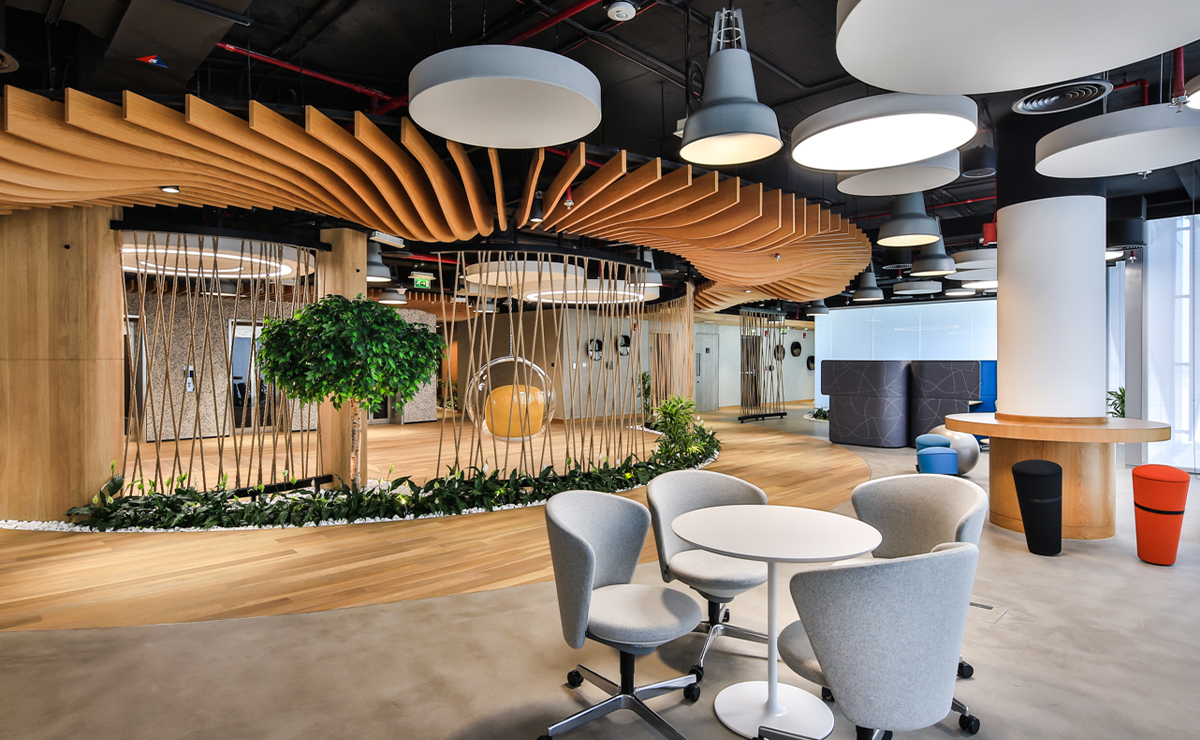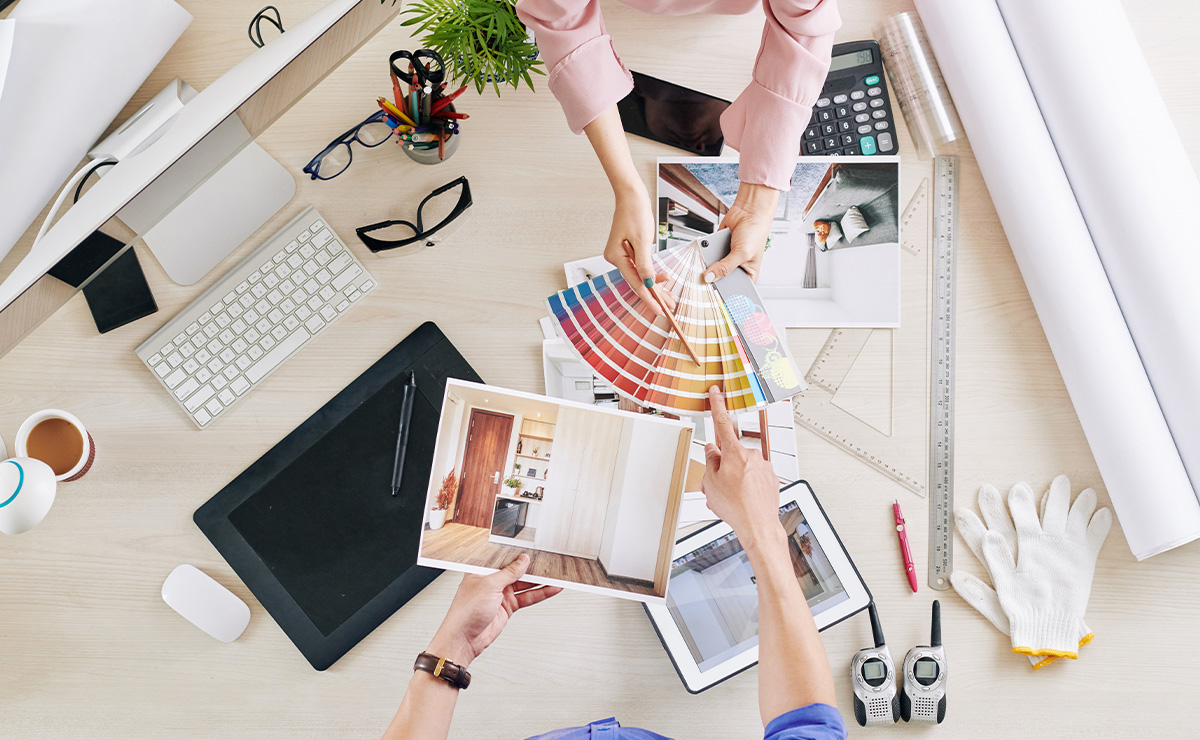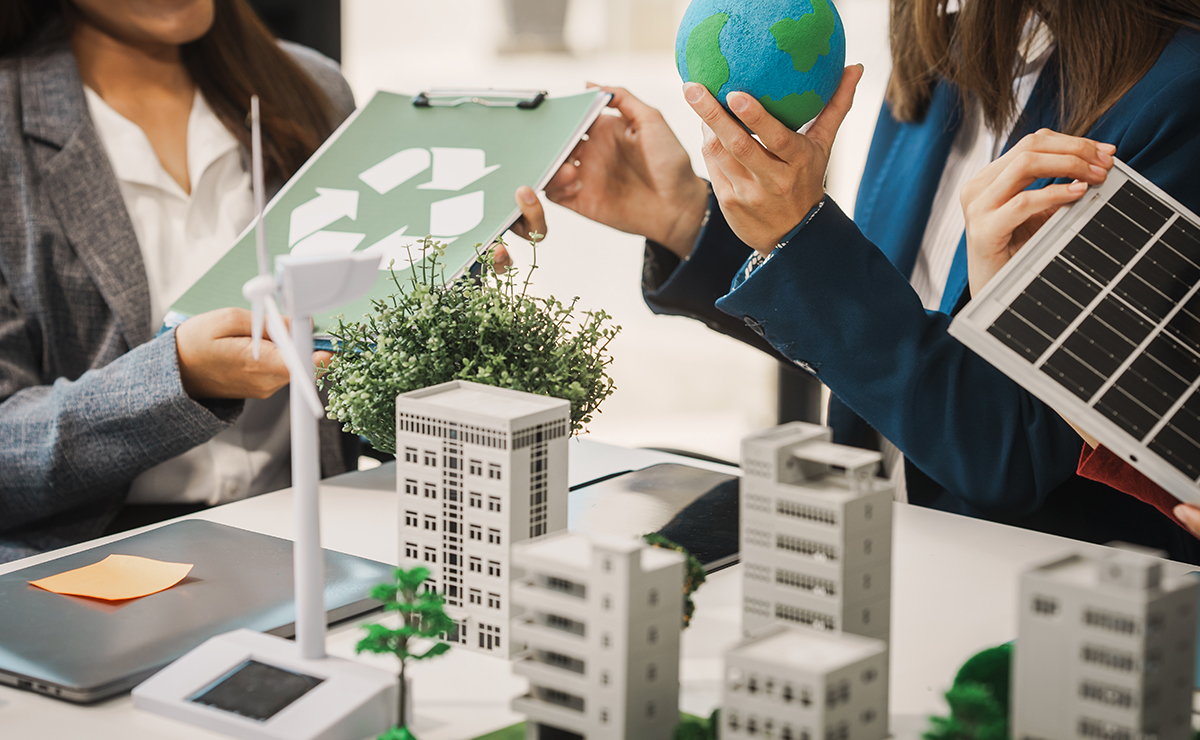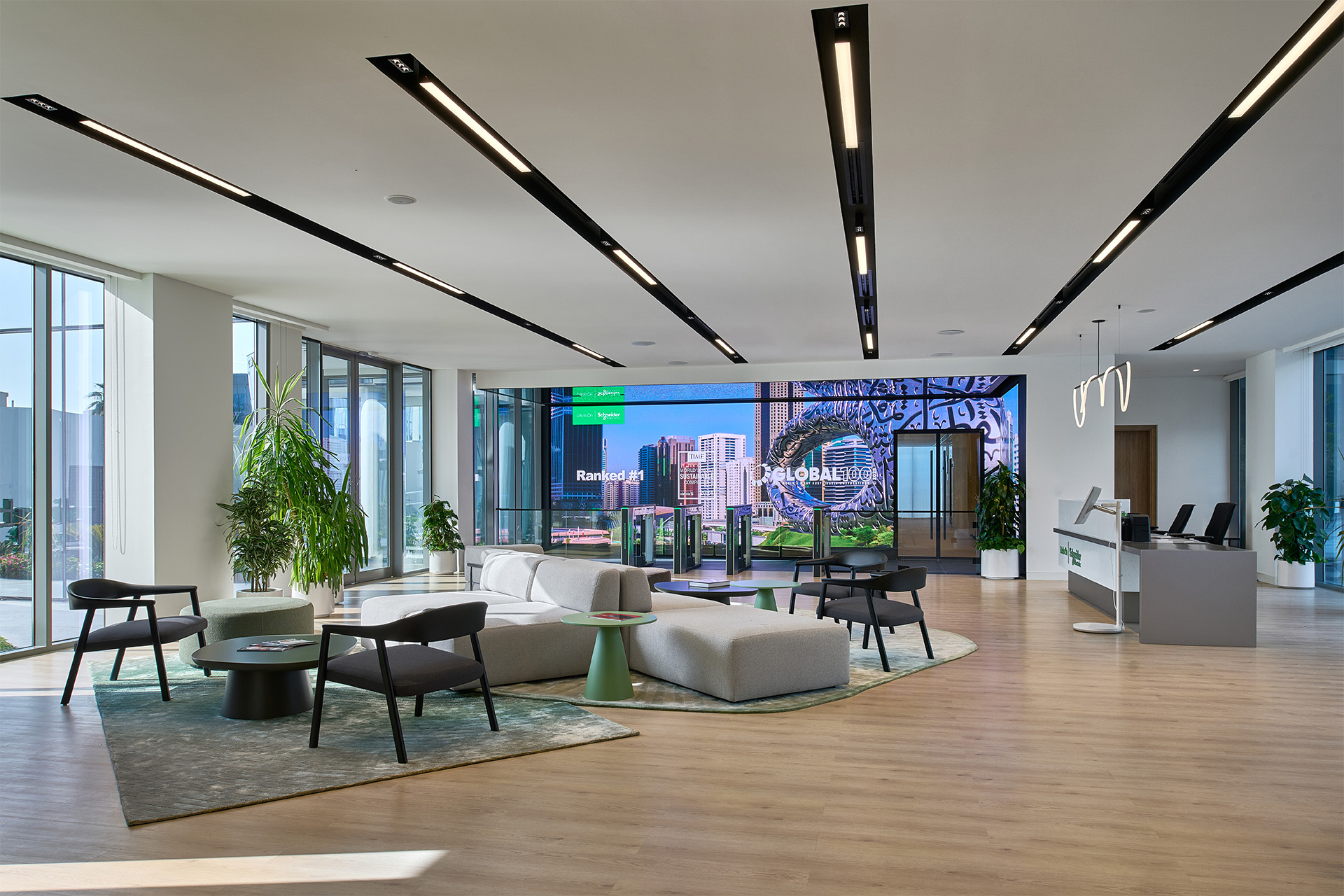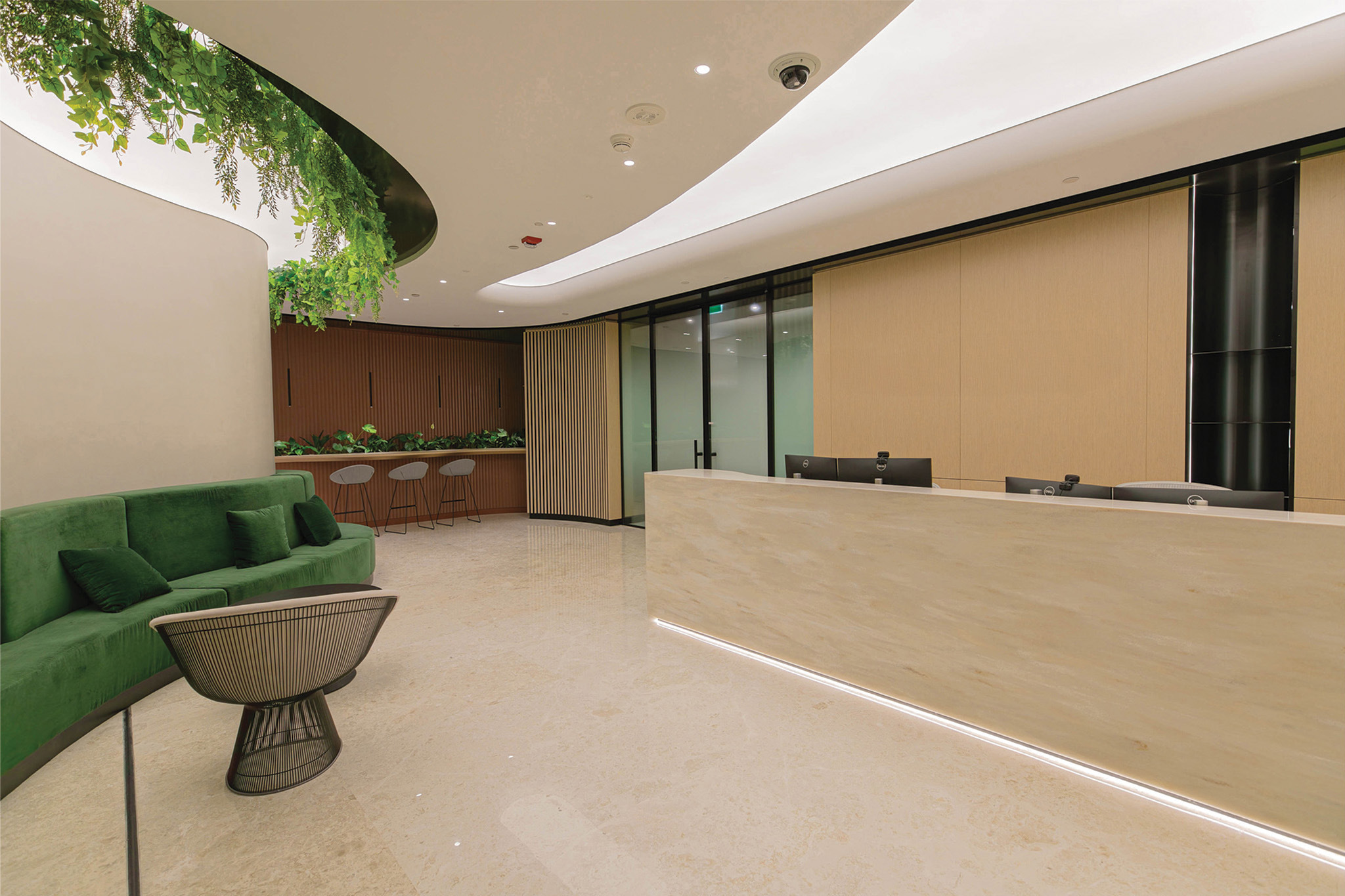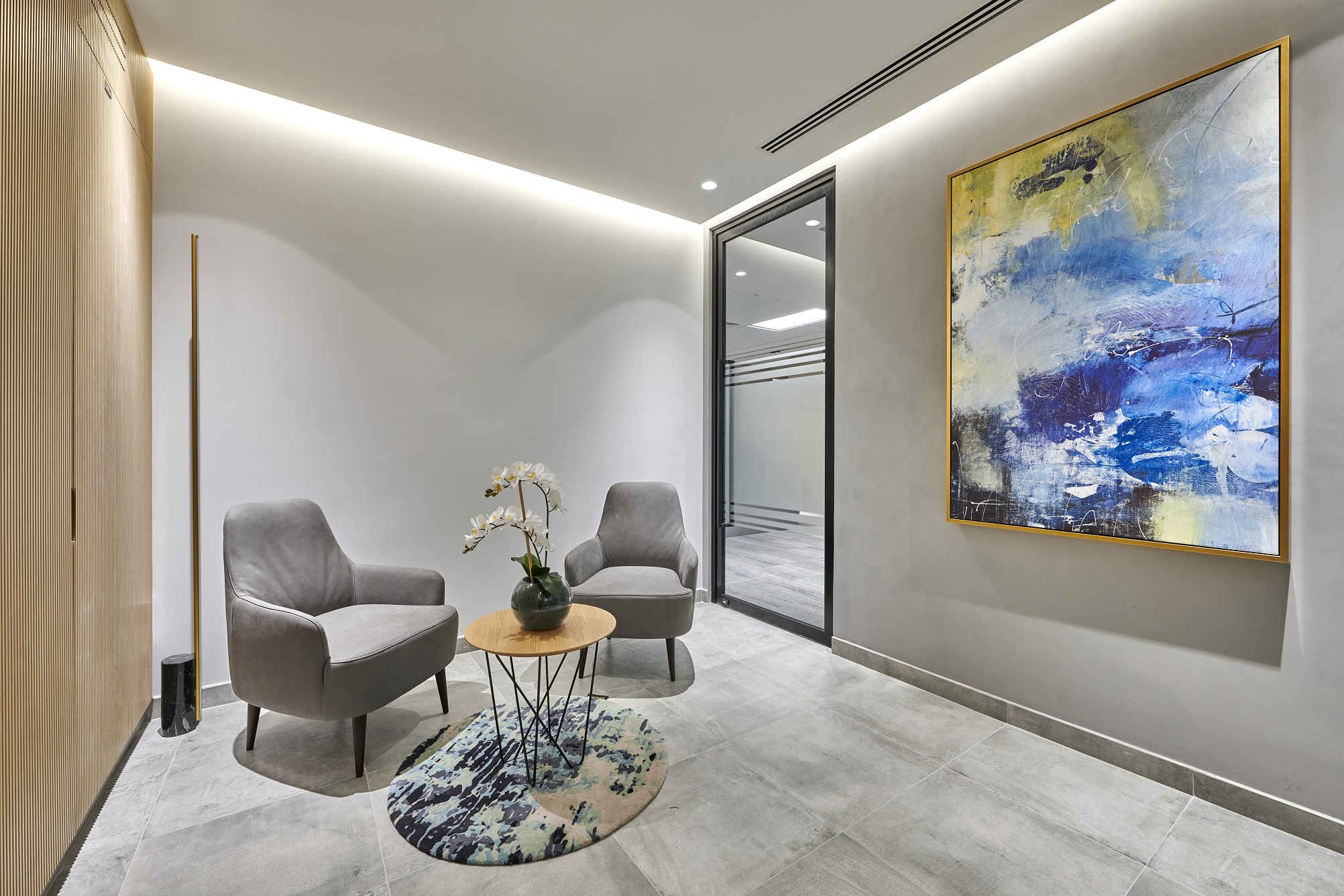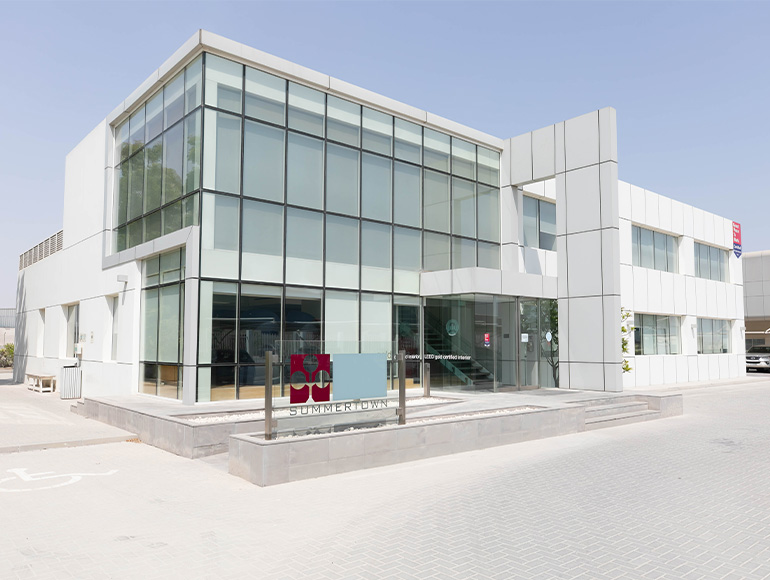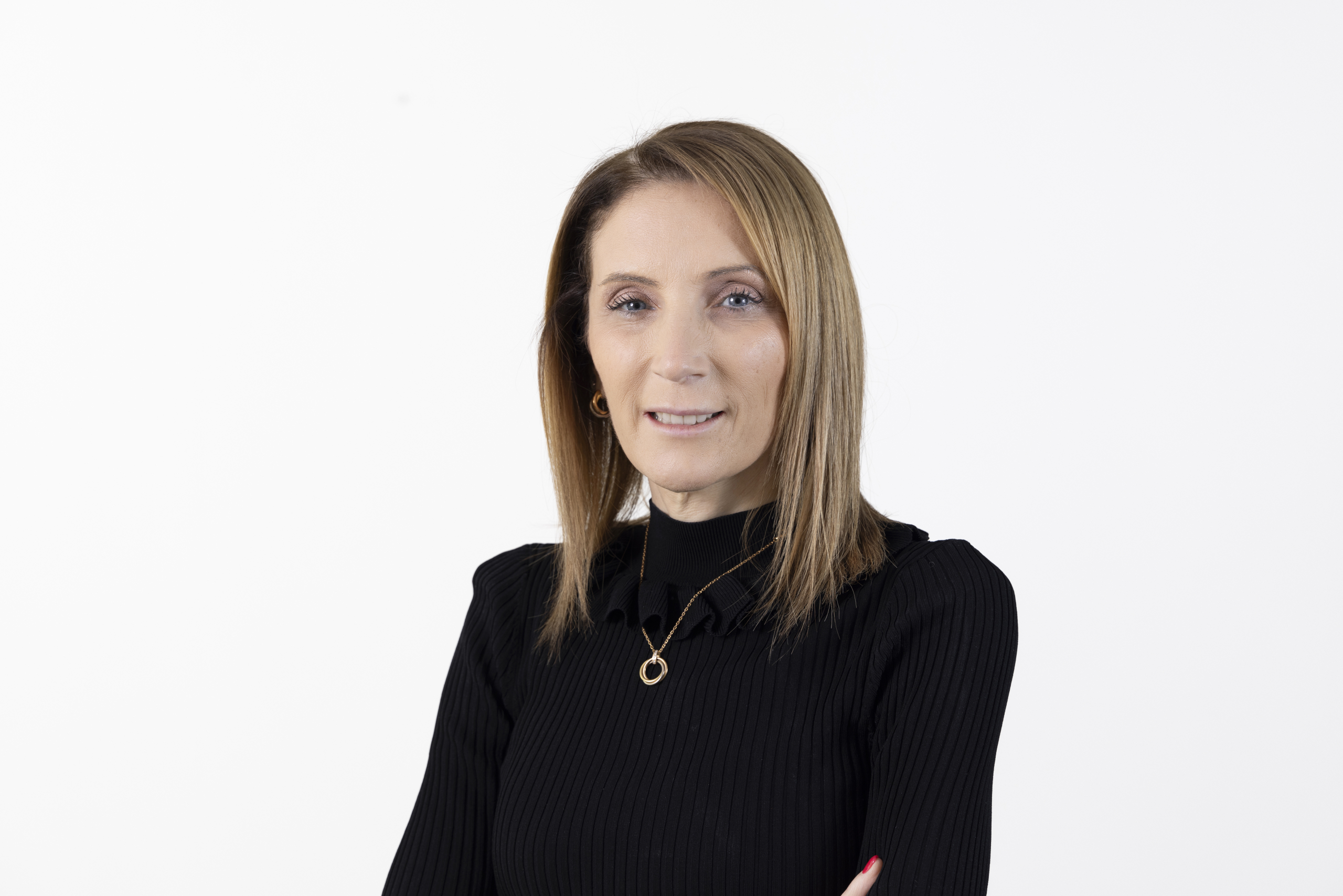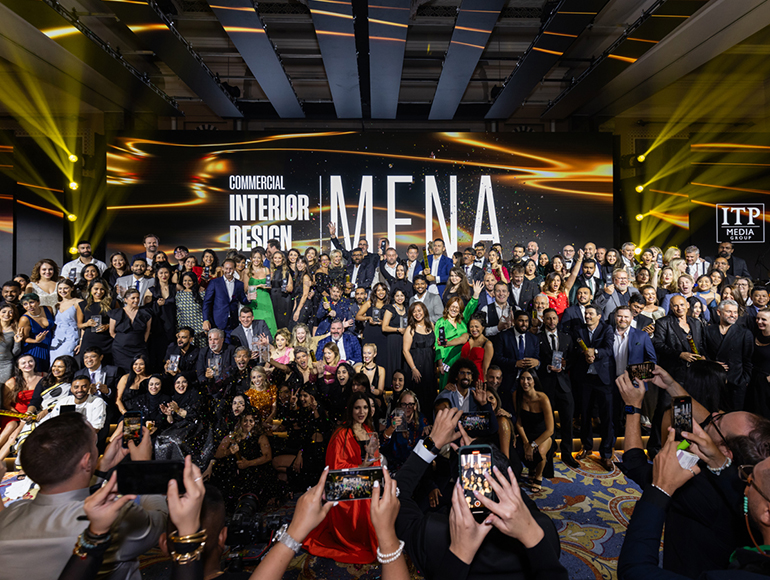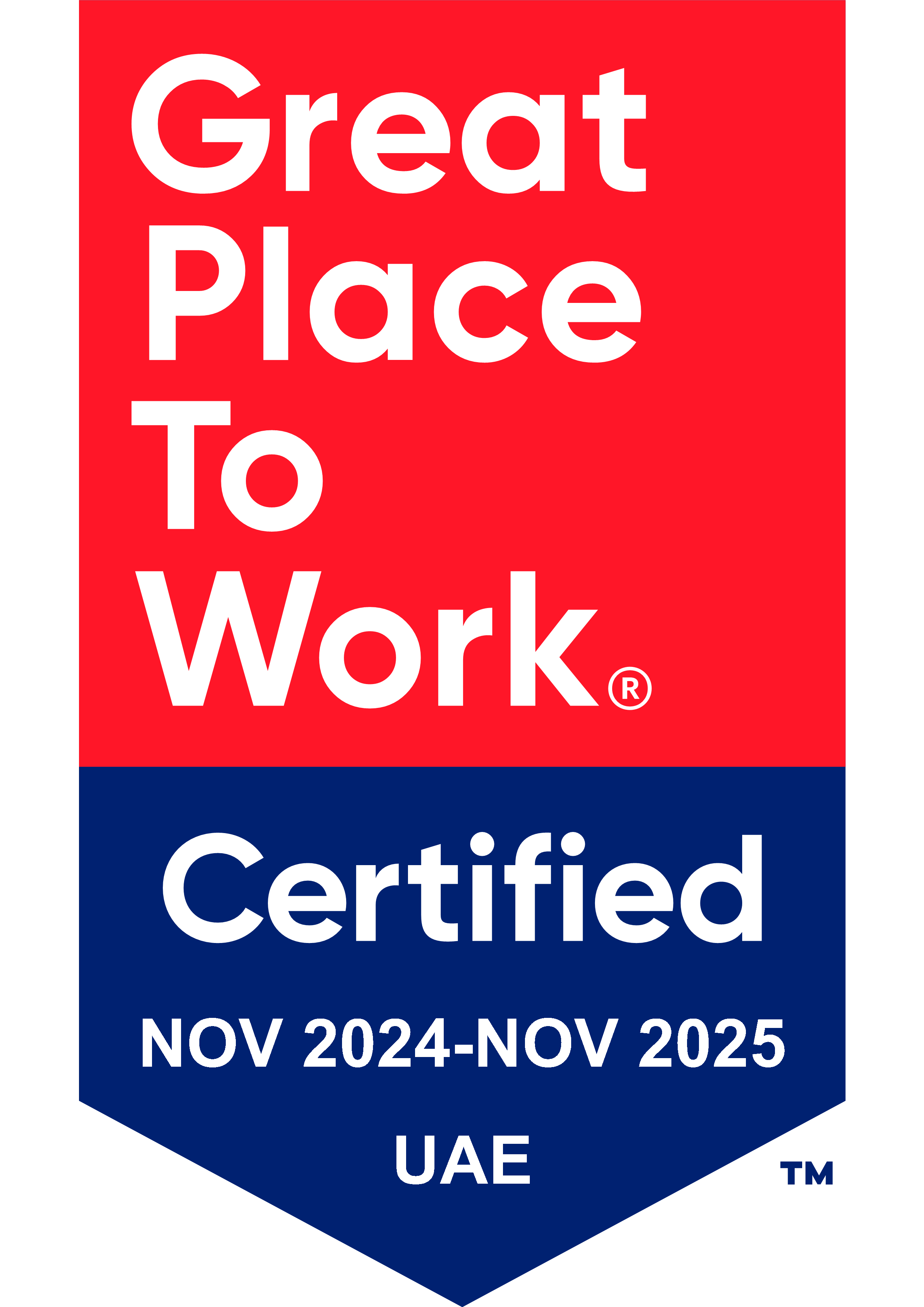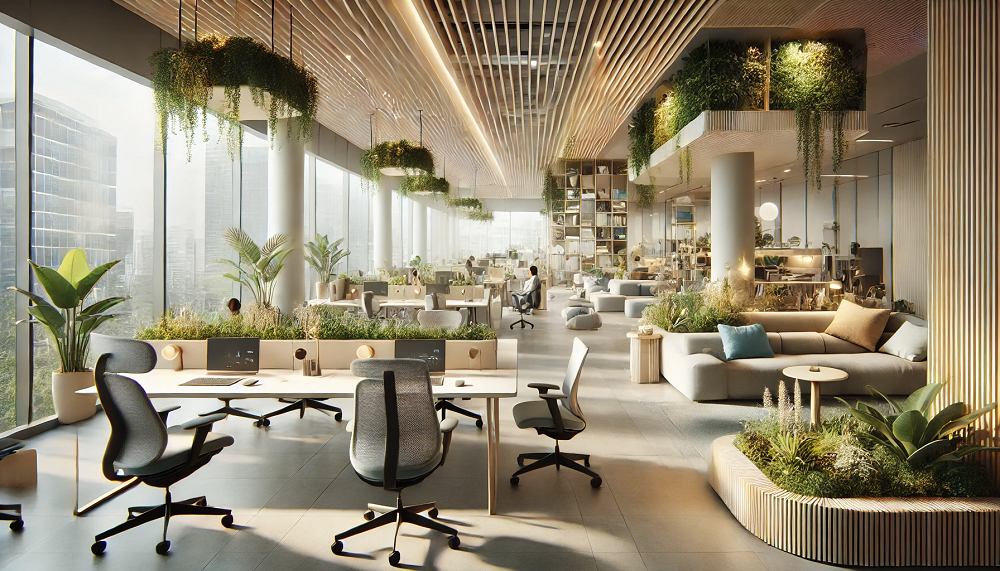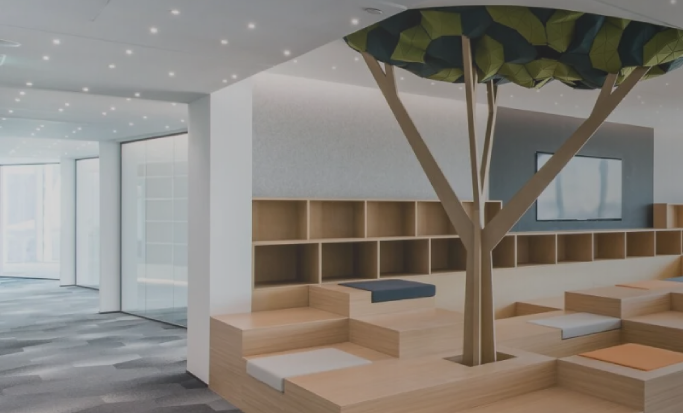
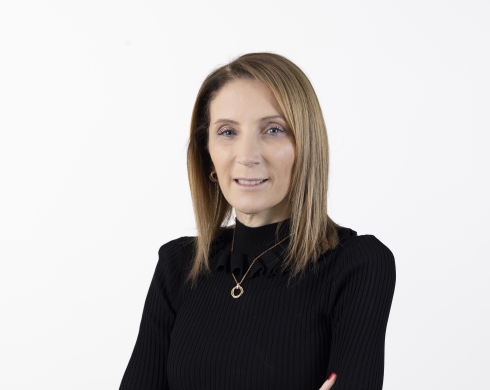
Nicola Trivett
General Manager & Sustainability Leader
Anyone who’s ever stepped onto a fit-out site midway through demolition knows the truth: Office transformation can generate a startling amount of waste. Perfectly good materials often end up discarded: Glass panels, quality timber, aluminium frames, even whole furniture sets.
The issue isn’t just what we remove, it’s what we overlook.
This reality drove us at Summertown to ask a better question: what if we could design fit-outs where fewer materials go to waste, and more go to work?
In the UAE, the momentum for sustainable design is no longer optional. Policies like the Dubai 2040 Urban Master Plan and the UAE Net Zero by 2050 Strategy signal a permanent shift. Clients are now actively seeking solutions that align with environmental and ESG goals, and that includes how their workplaces are built.
Repurposing materials in fit-outs is no longer a fringe idea. It’s a smart, forward-looking strategy with business, environmental and human benefits.
Why Circular Office Fit-Outs in Dubai Make Business and Environmental Sense
Globally, construction and demolition waste accounts for over a third of total solid waste, according to the World Bank [1]. Traditional fit-out practices follow a linear model: take, make, discard. But this mindset is incompatible with environmental goals or economic common sense.
At Summertown, we’ve embraced circular economy principles, and I can say with certainty: it’s not only possible, it works.
In 2024, we diverted 58% of all project waste from landfill, that’s 246,732 kg of total waste, with over 142,000 kg successfully recycled. These results, captured through our ISO Waste Tracking system and vendor receipts, significantly exceeded our 40% diversion target, originally set in our JOURNEY2030 strategy. It’s a practical example of how methodical waste planning, not just ambition, drives measurable environmental outcomes [2].

This is about more than environmental compliance. It reduces costs, improves indoor quality, and supports long-term flexibility. And importantly, it shows leadership, which matters when clients, employees, and partners are looking closely at how you operate.
Top Materials to Repurpose in Sustainable Office Fit-Outs
Not every material can or should be reused, but many can. And when repurposed well, they add not just function but character to a space.
- Reclaimed Wood: Reused timber brings warmth and depth, whether it’s in flooring, wall cladding, or custom joinery. Aged wood is often more stable than new, having acclimatised over time. And when it’s FSC-certified, we know it’s responsibly sourced [3].
- Recycled Metals: Aluminium, steel and copper can be melted down and reformed with far less energy than it takes to extract them. We often use recycled metal in ceiling systems, structural frames and even light fixtures. It adds a clean, modern edge, with a significantly reduced carbon footprint [4].
- Glass and Ceramics: Reused glass can be cut into partitions or decorative features. Old ceramic tiles, crushed and repurposed, become eye-catching terrazzo flooring. These are high-embodied-energy materials, so reuse here has a big impact [5].
- Recycled Plastics: New-generation composites made from PET, usually plastic bottles, are being used in acoustic panels, wall features and even furniture. These materials are highly versatile and divert plastic from landfill, which is still a major issue globally [6].
- Soft Materials: Used carpets can be rebacked and reused, or reprocessed into acoustic insulation. Furniture upholstery, curtains and partitions can be given a second life through thoughtful reconfiguration.
These material choices aren’t theoretical. Across our projects, we regularly identify reusable resources during pre-site visits, including blockwork, gypsum, wooden products, glass panels, light fittings, AV equipment, HVAC, and more. These aren’t incidental finds, they’re tracked through our site-specific Waste and Logistics Plans and measured as part of our monthly HSE reports.
By capturing this level of detail early, we give each material a chance to be reused or rehomed, instead of going to landfill.
Design for Disassembly: Building Flexible, Low-Waste Office Spaces
One of the most effective strategies we apply in sustainable fit-out is Design for Disassembly. Rather than gluing, welding or sealing components permanently, we opt for mechanical fixings and modular solutions.
We do this by:
- Using modular walls and ceiling systems
- Avoiding adhesives where mechanical fixings will suffice
- Installing raised floors with accessible service routes
- Selecting furniture designed for reconfiguration or repair
This flexibility means that when companies grow or relocate, the materials within their space can transition with them, reducing waste, saving money, and avoiding unnecessary carbon impact.
It’s a mindset we bring to every project now. And it pays off, for our clients and for the planet.
How Reusing Materials Makes Offices Healthier
There’s a benefit to reusing materials that often gets overlooked, and it’s one I feel strongly about. It is about the health of the people who actually work in the space.
When you bring in brand new furniture, flooring or wall finishes, they often release chemicals known as VOCs, or volatile organic compounds, into the air. The US Environmental Protection Agency has found that VOC levels indoors can be two to five times higher than outdoors. That is not something any of us would want for our teams. [8]
By reusing furniture and finishes that have already gone through that off-gassing process, we start with cleaner, healthier air from the very first day. When we also choose natural, reclaimed materials like timber or stone, we are not only making a sustainable choice but creating a workspace that feels fresh, uplifting and comfortable to spend time in. In my experience, people notice the difference the moment they step inside.
The Business Case for Reusing Materials in Dubai Office Fit-Outs
There’s a perception that repurposing materials is complicated or expensive. In fact, it often leads to measurable cost savings. We reduce disposal fees, minimise procurement, and shorten lead times by sourcing locally or reusing what’s already there.
Beyond that, using recycled content and regional materials contributes to LEED certification, which can enhance asset value. According to the US Green Building Council, up to 6 LEED points can be earned through material reuse and responsible sourcing [9].
And let’s not forget, being visibly sustainable builds brand equity. In a competitive market like Dubai, that counts.
Sustainable Fit-Out Success: How Schneider Electric Dubai Reused 93% of Materials
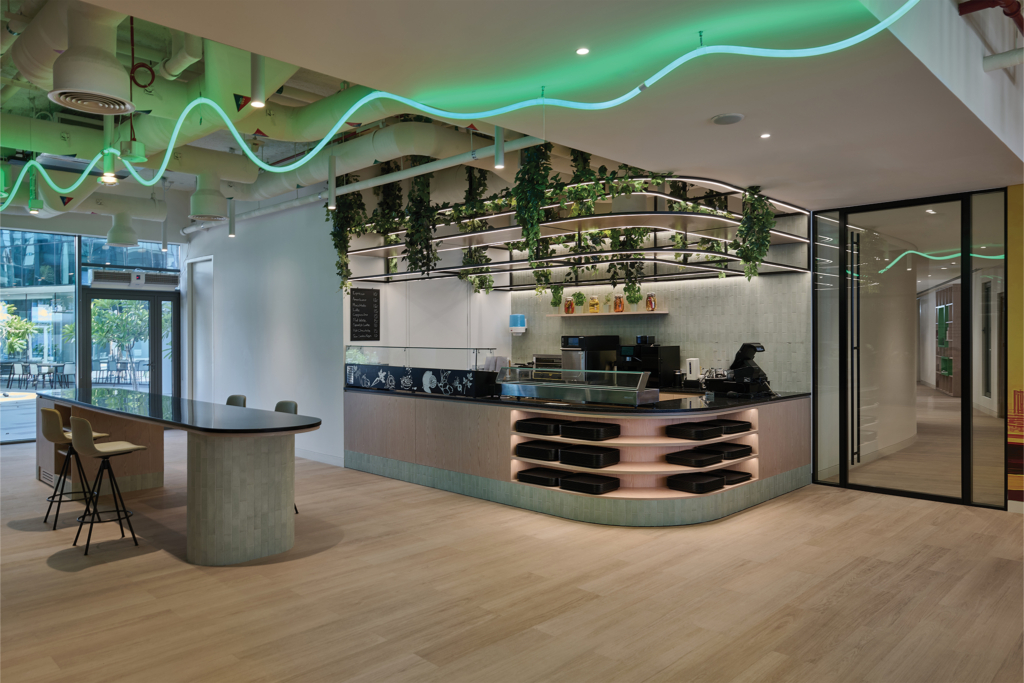
Our work with Schneider Electric, is a great example of circular fit-out in action. At Schneider Electric’s Dubai Silicon Oasis offices, sustainability wasn’t an add-on: It was embedded from the start. Summertown Interiors was appointed to refurbish the ground and first floor, delivering a complete fit-out that included bespoke joinery, AV and IT systems, a data centre, training spaces, and the brand’s signature Innovation Hub. The project was led by JLL MENA and designed by Gensler.
- 93% of the project was recycled and/or reused.
- 10,759kg for construction waste generated
- 10,049kg for construction waste recycled and/or reused
- 1,810kg for construction waste landfill disposal
These are not minor improvements, they represent a complete shift in how we think about material value. And the final result was a modern, high-performing office that reflected the client’s values in every detail.
This fit-out supports Schneider’s broader ESG goals, and Summertown is continuing to support their journey towards LEED Platinum and WELL certification.
This approach wasn’t isolated. Across all our projects in 2024, we implemented:
- On-site segregation of wood, metals, gypsum and plastics
- Bulk procurement to reduce packaging
- Collection of vendor recycling certificates and landfill receipts
👉 Explore how we designed a circular economy office
What’s Next for Sustainable Office Design in Dubai
Sustainable office design in Dubai is evolving fast. Supply chains are becoming greener, material recovery networks are expanding, and more contractors, suppliers and designers are embracing circular fit-out principles as standard practice.
At Summertown, we are taking this momentum further. We’re investing in digital tools such as Mastt to track carbon impacts, waste diversion rates and material flows in real time. This data gives our clients clear, measurable results on their environmental performance.
We’ve also partnered with Enviroserve to ensure e-waste and recyclable materials are kept out of landfill. Beyond that, our team is trialling new methods to recover, store and reuse valuable fit-out components, from high-quality joinery to mechanical systems, across multiple projects.
The challenges are real: Logistics, storage and quality control all require careful planning. But with the right partners, the right systems and a clear vision, it works.
This is how we see the next phase of office design in Dubai: resilient, resource-efficient and built to benefit both the economy and the environment.
Conclusion: Building Value from the Inside Out
I believe every fit-out project offers us a choice. We can discard the old and start fresh, or we can look more carefully at what we already have and ask: What’s still useful? What can be reimagined?
Repurposing materials in office fit-outs is more than a sustainability trend. It’s a practical, proven way to reduce waste, enhance design quality, and contribute to a healthier, more responsible built environment. It improves project performance, supports certification, lowers costs, and creates more meaningful spaces. And for businesses in Dubai, it’s a clear signal that you’re part of the solution.
At Summertown, we’re committed to building smarter, greener, more human workspaces.
If you’re ready to take the next step, we’re here to help. Contact us today
Let’s create a space that works for your people, and the planet.
References:
[1] World Bank – What a Waste 2.0, https://datatopics.worldbank.org/what-a-waste/
[2] Summertown Interiors – Sustainability Report 2024, https://www.summertown.ae/sustainability/
[3] Forest Stewardship Council – https://fsc.org/en
[4] European Aluminium – Recycling Benefits, https://www.european-aluminium.eu/
[5] Okon Recycling – Construction Waste Projects, https://www.okonrecycling.com/
[6] KRION – Decoration with Recycled Materials, https://www.krion.com/en/news/decoration-recycled-materials
[7] US EPA – VOCs and Indoor Air Quality, https://www.epa.gov/indoor-air-quality-iaq/volatile-organic-compounds-impact-indoor-air-quality
[8] Harvard – The 9 Foundations of a Healthy Building, https://forhealth.org/9-foundations/
[9] USGBC – LEED v4.1 Building De

Nicola Trivett
General Manager & Sustainability Leader
